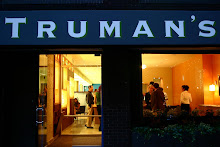Is The Model of Masculinity Changing In America? By Maria Shriver
Got Me Thinking: Is the Model of Masculinity Changing in America?
CNN's John Blake analyzed "What 'Situation Room Photo' reveals about us" from many cultural angles, but I was struck most by what the photo might say about the evolving model of masculinity in America.
This excerpt got me thinking:
American presidents have traditionally sold themselves as our alpha male. Theodore Roosevelt went safari hunting; Ronald Reagan cleared brush at his ranch in a cowboy hat; George W. Bush did his "Top Gun" imitation when he donned a flight suit on the deck of an aircraft carrier.
"There's a certain kind of machismo and swagger that Americans expect their president to reflect," says Clarence Lusane, author of "The Black History of the White House."
Projecting that presidential swagger was so powerful that it obscured some presidents' serious illnesses, such as President Franklin Roosevelt's polio and Kennedy's hobbling assortment of ailments, including a bad back, Lusane says.
Projecting that presidential swagger was so powerful that it obscured some presidents' serious illnesses, such as President Franklin Roosevelt's polio and Kennedy's hobbling assortment of ailments, including a bad back, Lusane says.
"They were both very ill. Kennedy could barely stand for two hours. But they never let those images out because they had to project toughness. Obama, though, is a different animal." The photo shows why.
If someone didn't know who Obama was, he or she probably couldn't tell that he was the president in the room, some scholars say.
"He's not in the tallest chair," says Brown, the sociology professor at Meredith College. "He's not the center of attention. He's not even in the middle of the room."
Yet Obama's willingness to be photographed without the typical Oval Office swagger gives birth to a new type of swagger, says Contee of Jack & Jill Politics.
She says that photo shows Obama's self-assurance and leadership style. He seeks out the opinions of his advisers. He believes in collaboration -- all while he's taking down the baddest terrorist on the planet. He doesn't need to wear a "Top Gun" flight jacket to project strength, she says.
I've been wondering recently whether we are at a transformational moment in American culture as it relates to our expectations of men, our views on manhood, and our definitions of masculinity. This description of President Obama's "leadership style" bears some of those tensions out.
I'm fascinated that President Obama has been able to "project strength" in a way that is authentic to himself without having to imitate traditional "alpha male" models.
So, what do you think: Is the model of masculinity changing in America? Who do you think are some of the new masculine role models? And how are we defining masculinity differently today?
If you don't think there has been a cultural shift, what expectations do we still place on our male leaders and is President Obama living up to them?











